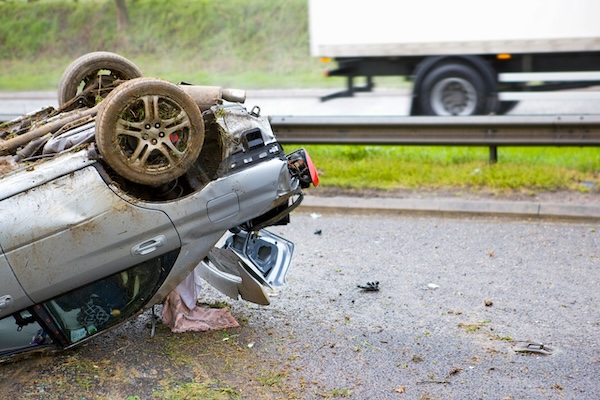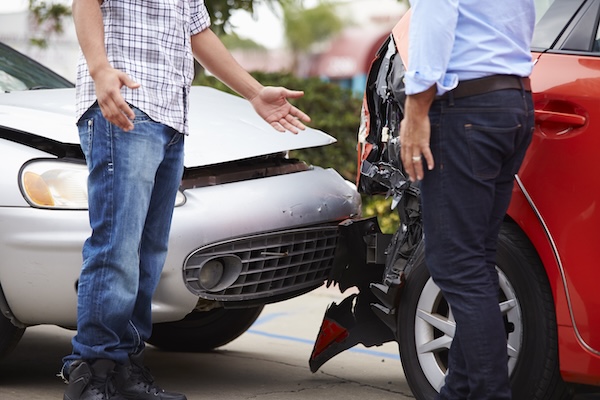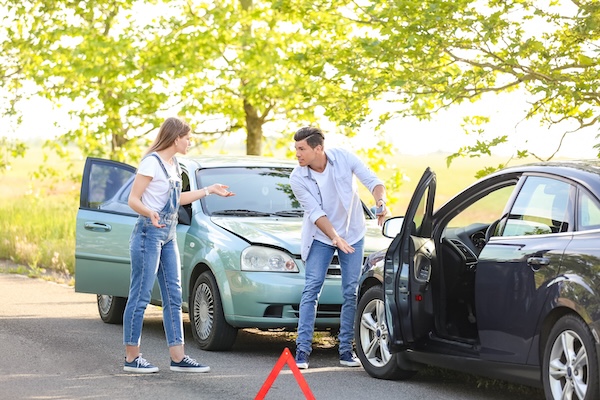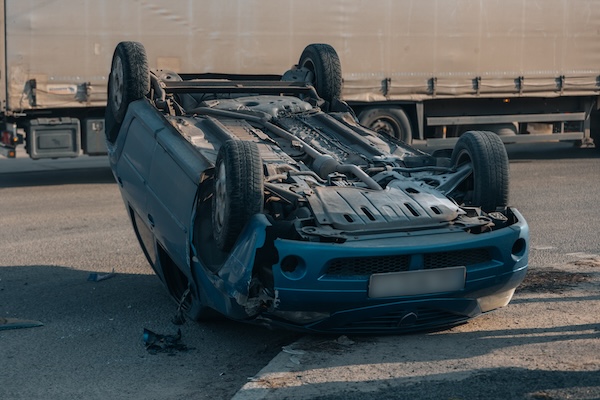Understanding Fault in Charlotte Car Accidents: Why It Matters
Car accidents can be a serious and life-changing event, and understanding fault in a car accident is crucial in determining responsibility, especially in a city like Charlotte, where accidents can occur frequently.
If you’re involved in an auto accident, consulting a car accident lawyer can help you navigate the complexities of determining fault. While the concept of fault in a car accidents may seem simple at first glance, it actually involves various elements, including the roles of insurance companies, police officers, and the drivers involved.
Factors like vehicle damage, personal injury protection, and the accident scene details all play a role in how fault is determined. Whether you’re dealing with property damage, medical expenses, or bodily injury, understanding how insurance companies determine fault can help protect your rights and ensure that the at fault driver is held responsible for the accident.
Determining Fault in a Car Accident
When an accident occurs, it is crucial to understand how and why the accident happened to determine fault in a car accident case. The police report is often a key component, detailing the accident location, accident details, and any traffic law violations such as running a stop sign or speeding.
Insurance adjusters from car insurance companies review the physical evidence at the accident scene, such as skid marks, the position of the vehicles involved, and damage to vehicles. They analyze factors such as location, weather, and time at which the accident occurred to assess responsibility and potential claims.
Insurance companies carefully evaluate various factors at the accident scene to determine the circumstances surrounding the accident and whether external factors contributed to it.
In states like Charlotte, where laws may involve comparative negligence or modified comparative negligence, fault can be divided among more than one driver if both parties contributed to the crash. For example, if one driver was speeding and the other driver ran a red light, both drivers may be found partially at fault for the accident. The insurance companies determine the degree of liability based on the evidence presented and the state’s laws.
The Role of Insurance Companies
Once fault is determined, an insurance adjuster is responsible for investigating the incident, determining fault, and overseeing the settlement of claims. Insurance companies play a critical role in covering vehicle damage, medical expenses, and any other costs related to the accident. If the at fault driver has liability insurance, their insurance will typically cover the medical treatment and property damage caused to the injured party. However, car accident insurance coverage can vary, and in some cases, the other insurance company may be involved if the other driver is found to be the negligent driver.
Insurance companies determine fault by reviewing accident details, including physical evidence, statements from involved parties, and police reports. In cases of personal injuries, the injured party may need to file an insurance claim to seek compensation for medical bills, lost wages, and other damages. Personal injury protection (PIP) insurance can also cover some of these expenses, especially in no fault states, where each driver’s insurance typically covers their own damages regardless of who was at fault.
The Importance of Evidence in Determining Fault
In a car accident case, gathered evidence is a critical factor in determining fault. Without solid evidence, it can be difficult to establish which party is responsible for the crash. Insurance companies and auto accident attorneys will work diligently to collect all relevant physical evidence that can substantiate each party’s claims.
This includes photos of the accident scene, which can offer a clear visual account of the positions of the vehicles involved, damage to property, road conditions, and any potential contributing factors such as weather conditions or traffic signals. Witness statements are equally important, as they provide independent accounts of how the accident happened, especially when there is a dispute over what occurred. Additionally, medical records documenting the injuries sustained in the accident are essential for calculating compensation for medical treatment, personal injuries, and lost wages.
Police officers are also key players in the investigation process. After an accident, they often provide an initial assessment in the police report, which can include whether any traffic law violations took place, such as running a stop sign, speeding, or driving under the influence (DUI). These violations can significantly impact who is considered at fault. If the report shows that one party was breaking the law when the accident occurred, this can make determining fault much clearer.
Photographic evidence plays a particularly crucial role in supporting claims and establishing liability. Visual documentation provides an objective, clear representation of the accident scene and the damages sustained by the vehicles involved. These images can help paint a complete picture of the events, making it easier to assess the extent of the damage and how the accident unfolded.
When drivers involved in the accident dispute fault, additional factors must also be considered. These factors include the driving behavior of each driver, whether there were any speed limit violations, or if either party was distracted while driving. For example, texting or using a phone while driving is a common cause of distracted driving accidents. In such cases, the driver’s actions leading to the accident must be scrutinized, and it may be deemed that one driver was negligent or contributed to the crash.
Insurance adjusters will analyze the evidence thoroughly to assess the driver’s fault and determine whether the accident was caused by contributory negligence (where one driver’s actions contributed to the accident) or if both drivers share the blame under comparative negligence laws. In states that follow modified comparative negligence, fault may be apportioned between the involved parties, with each being held accountable for the percentage of the crash they are responsible for. This can affect the amount of compensation each party is entitled to, making the accuracy of evidence and its interpretation critical to the case’s outcome.
Role of Authorities
The role of authorities, such as police officers, is critical in determining fault in a car accident. Police officers investigate the accident scene, gather evidence, and interview witnesses to determine what happened. They also issue citations to drivers who have violated traffic laws, which can be used as evidence to determine fault. The police report is a crucial document in determining fault, as it provides a detailed account of the accident and the parties involved. Insurance companies rely on police reports to determine fault and assign liability.
Contributory Negligence
Contributory negligence is a principle that applies in some states, where the fault of all parties involved in the accident is taken into account when determining damages. In contributory negligence states, if the injured party is found to be partially at fault, their damages may be reduced or eliminated. For example, if the injured party is found to be 20% at fault, their damages may be reduced by 20%. A car accident lawyer can help navigate the complexities of contributory negligence and ensure that the parties involved receive fair compensation.
How Fault Affects Your Car Insurance Claim
After an accident, insurance companies determine how much compensation is owed based on who is deemed to be at fault. When multiple parties share responsibility in accidents, it can impact the outcome of claims, insurance premiums, and potential legal consequences. If the other driver is determined to be at fault, their liability insurance will typically cover the medical expenses, property damage, and other losses. However, if the at fault driver has insufficient insurance or is uninsured, the injured party may need to pursue compensation through their own insurance coverage or take legal action.
For injured parties seeking compensation for medical expenses, lost wages, or bodily injury, it’s important to consult with auto accident attorneys who specialize in car accident fault cases. They can assist in gathering evidence, negotiating with insurance companies, and ensuring that the actions of all involved parties are considered when determining fault, helping you receive fair compensation for your injuries and losses.
State Laws and Regulations
State laws and regulations play a significant role in determining fault in a car accident. Different states have different laws and regulations regarding fault, and insurance companies must comply with these laws when determining fault. For example, some states are no-fault states, where each party’s insurance company pays for their own damages, regardless of who is at fault. Other states are at-fault states, where the at-fault driver is responsible for the damages and injuries caused. A car accident lawyer can help navigate the complexities of state laws and regulations and ensure that the parties involved receive fair compensation.
Legal Assistance and Filing an Insurance Claim
Whether you are filing an insurance claim or pursuing legal action, consulting a law firm is crucial to navigate the complexities of car accident fault and liability insurance. A car accident lawyer can help evaluate your driving record, assist in collecting evidence, and provide guidance on whether to pursue compensation from the other insurance company or take legal action.
It is important not to admit fault at the scene of the accident, as fault determination can be influenced by witness accounts and evidence. Admitting fault prematurely can complicate your case and affect your compensation.
If more than one driver is involved and both parties are found partially at fault, a car accident lawyer can help you understand your state’s fault-based system. For example, in at fault states, the at fault party is responsible for covering the damages, but in no fault states, each driver’s car insurance covers their own medical costs and property damage, regardless of who was responsible for the accident.
Take Action Now: Protect Your Rights After a Car Accident
Determining fault in a car accident is a complex process that involves a detailed investigation of the accident location, accident details, and other critical factors. Seeking immediate medical attention after a car wreck is crucial, as injuries may not be immediately apparent due to adrenaline. Whether you’re facing medical treatment, vehicle damage, or lost wages, understanding how insurance companies and police officers assess fault is vital to securing fair compensation.
Additionally, obtaining contact details from witnesses, such as drivers with dashcam footage, can support your case by providing crucial evidence. If you’re uncertain about your next steps or how to navigate your claim, don’t wait—contact a qualified car accident lawyer today. With the right legal support, you can ensure your rights are protected, avoid costly mistakes, and maximize your chances of receiving the compensation you deserve for personal injuries, property damage, and any other losses caused by the crash. Reach out now (704) 900-7675 for a consultation and take the first step toward recovery and justice.








